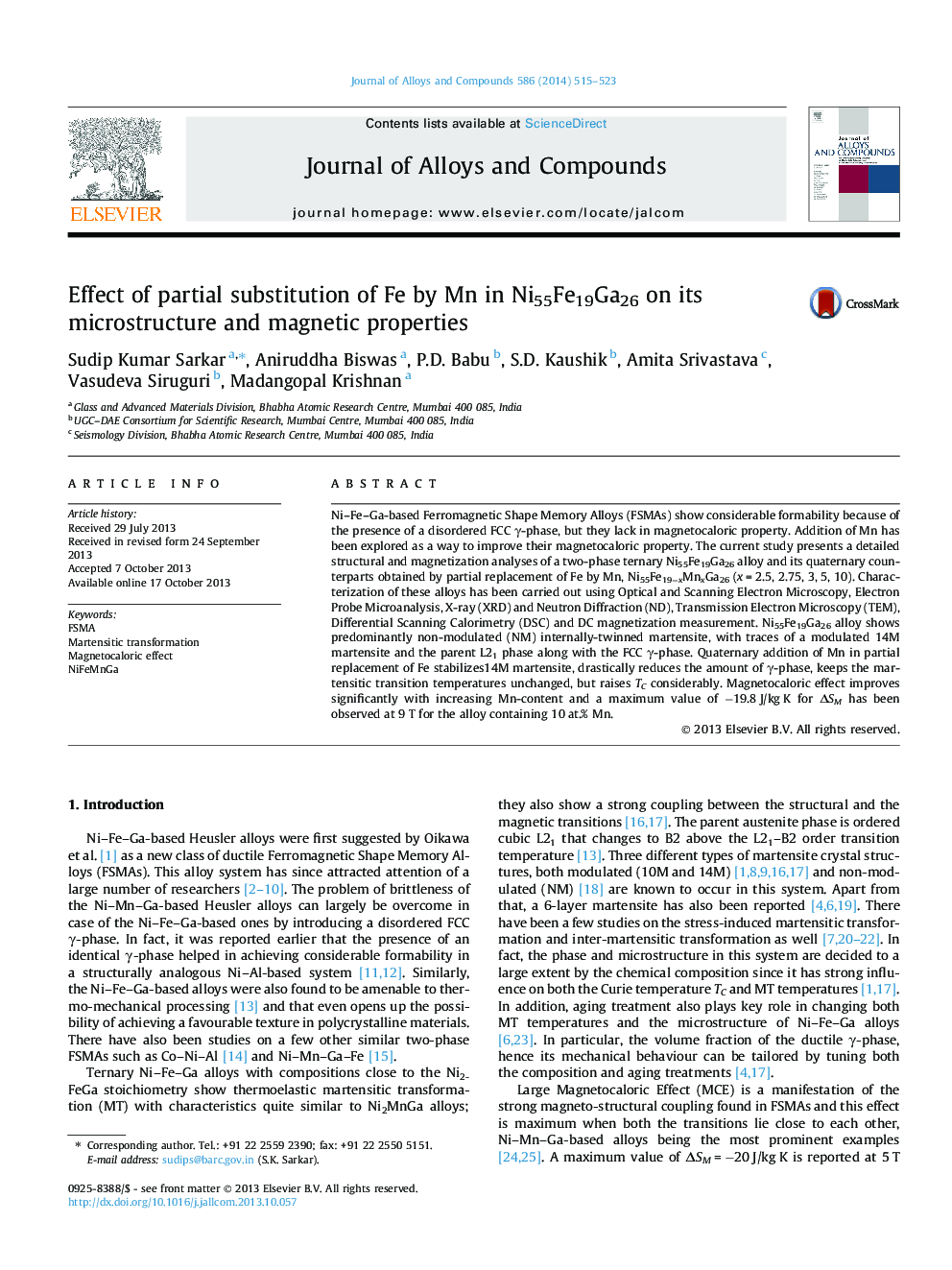| Article ID | Journal | Published Year | Pages | File Type |
|---|---|---|---|---|
| 1612687 | Journal of Alloys and Compounds | 2014 | 9 Pages |
Abstract
Ni-Fe-Ga-based Ferromagnetic Shape Memory Alloys (FSMAs) show considerable formability because of the presence of a disordered FCC γ-phase, but they lack in magnetocaloric property. Addition of Mn has been explored as a way to improve their magnetocaloric property. The current study presents a detailed structural and magnetization analyses of a two-phase ternary Ni55Fe19Ga26 alloy and its quaternary counterparts obtained by partial replacement of Fe by Mn, Ni55Fe19âxMnxGa26 (x = 2.5, 2.75, 3, 5, 10). Characterization of these alloys has been carried out using Optical and Scanning Electron Microscopy, Electron Probe Microanalysis, X-ray (XRD) and Neutron Diffraction (ND), Transmission Electron Microscopy (TEM), Differential Scanning Calorimetry (DSC) and DC magnetization measurement. Ni55Fe19Ga26 alloy shows predominantly non-modulated (NM) internally-twinned martensite, with traces of a modulated 14M martensite and the parent L21 phase along with the FCC γ-phase. Quaternary addition of Mn in partial replacement of Fe stabilizes14M martensite, drastically reduces the amount of γ-phase, keeps the martensitic transition temperatures unchanged, but raises TC considerably. Magnetocaloric effect improves significantly with increasing Mn-content and a maximum value of â19.8 J/kg K for ÎSM has been observed at 9 T for the alloy containing 10 at.% Mn.
Related Topics
Physical Sciences and Engineering
Materials Science
Metals and Alloys
Authors
Sudip Kumar Sarkar, Aniruddha Biswas, P.D. Babu, S.D. Kaushik, Amita Srivastava, Vasudeva Siruguri, Madangopal Krishnan,
